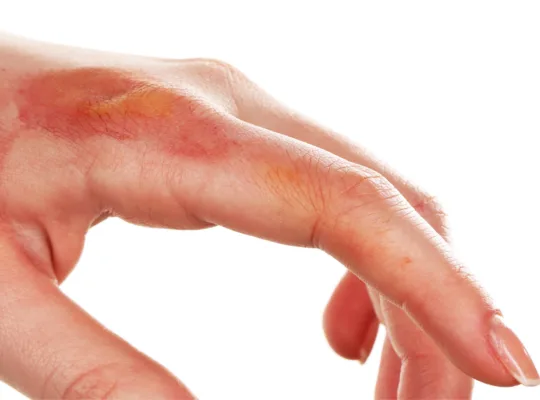Upper respiratory infections (URIs) are a type of infection that affects the nose, sinuses, pharynx, and larynx.
These infections are caused by a variety of viruses and bacteria and can be easily spread from person to person through coughing, sneezing, or close contact.
While most URIs are self-limiting and resolve on their own, some cases may require medical attention.
Treatment options for URIs may vary depending on the severity of the infection and may include a combination of over-the-counter medications, prescription drugs, and home remedies.
In this article, we will explore the various treatment options available for upper respiratory infections.
Types Of Upper Respiratory Infections
Upper respiratory infections (URIs) are a group of infections that affect the upper respiratory tract, including the nose, sinuses, pharynx, and larynx.
URIs are usually caused by viruses, but can also be caused by bacteria. The most common types of URIs include the common cold, influenza (flu), sinusitis, pharyngitis (sore throat), and laryngitis.
In some cases, URIs can also lead to more severe conditions such as bronchitis and pneumonia.
Each type of URI has its own set of symptoms and treatment options. Understanding the different types of URIs can help you identify the appropriate treatment for your specific condition.
Treatment Options For URIs
Treatment options for upper respiratory infections (URIs) depend on the specific type of infection and the severity of the symptoms. In general, URIs caused by viruses do not respond to antibiotics, which are only effective against bacterial infections.
Here are some common treatment options for URIs:
- Over-the-counter (OTC) medications: OTC medications such as pain relievers, decongestants, and cough suppressants can help alleviate the symptoms of URIs.
- Prescription medications: Antiviral medications may be prescribed for severe cases of flu, while antibiotics may be prescribed for bacterial infections such as sinusitis or pneumonia.
- Home remedies: Home remedies such as drinking plenty of fluids, getting adequate rest, using a humidifier, and gargling with salt water can help ease symptoms and speed up recovery.
- Prevention: Practicing good hygiene, such as frequent hand washing, covering your mouth and nose when sneezing or coughing, and avoiding close contact with sick individuals can help prevent the spread of URIs.
It’s important to note that in some cases, URIs can lead to more serious complications, especially in individuals with weakened immune systems or underlying health conditions.
If you experience severe or persistent symptoms, or if you are at risk for complications, it’s important to seek medical attention.
What Is The Best Way To Treat A URI?
The best medicines for treating upper respiratory infections (URIs) depend on the specific symptoms and severity of the infection.
Over-the-counter (OTC) pain relievers, decongestants, and cough suppressants can help alleviate symptoms such as fever, aches and pains, nasal congestion, and coughing.
However, it’s important to read the labels carefully and follow dosage instructions, as some medications can have potential side effects and interactions with other medications.
If symptoms persist or worsen, it’s important to seek medical attention for further evaluation and treatment.
How To Know If A URI Is Bacterial Or Viral
It can be difficult to determine if an upper respiratory infection (URI) is caused by bacteria or viruses based on symptoms alone, as many of the symptoms are similar. However, there are some general guidelines that can help distinguish between the two:
- Onset of symptoms: Viral infections typically have a gradual onset of symptoms over a period of days, while bacterial infections may have a sudden onset of more severe symptoms.
- Duration of symptoms: Viral infections usually last between 7-10 days, while bacterial infections may persist for longer periods of time.
- Fever: A high fever is more commonly associated with bacterial infections.
- Color of mucus: Mucus color is not always an indicator of the type of infection, but green or yellow mucus may suggest a bacterial infection.
- Medical history: A history of recurring infections or chronic illnesses may suggest a higher likelihood of a bacterial infection.
If your symptoms are severe or persist for an extended period of time, it’s important to seek medical attention to determine the cause of the infection and receive appropriate treatment.
Your healthcare provider may perform tests, such as a throat culture or blood test, to help determine if the infection is bacterial or viral.
Final Thoughts
Upper respiratory infections (URIs) can be uncomfortable and disruptive to daily life, but thankfully, there are several effective treatment options available. Also you can use scba respirator accessories for respirator infections.
Depending on the type and severity of the infection, treatment may include over-the-counter or prescription medications, home remedies, and prevention measures.
It’s important to practice good hygiene and seek medical attention if symptoms persist or worsen, especially for individuals with weakened immune systems or underlying health conditions.
With proper treatment and care, most people with URIs can expect to recover fully within a few weeks.







